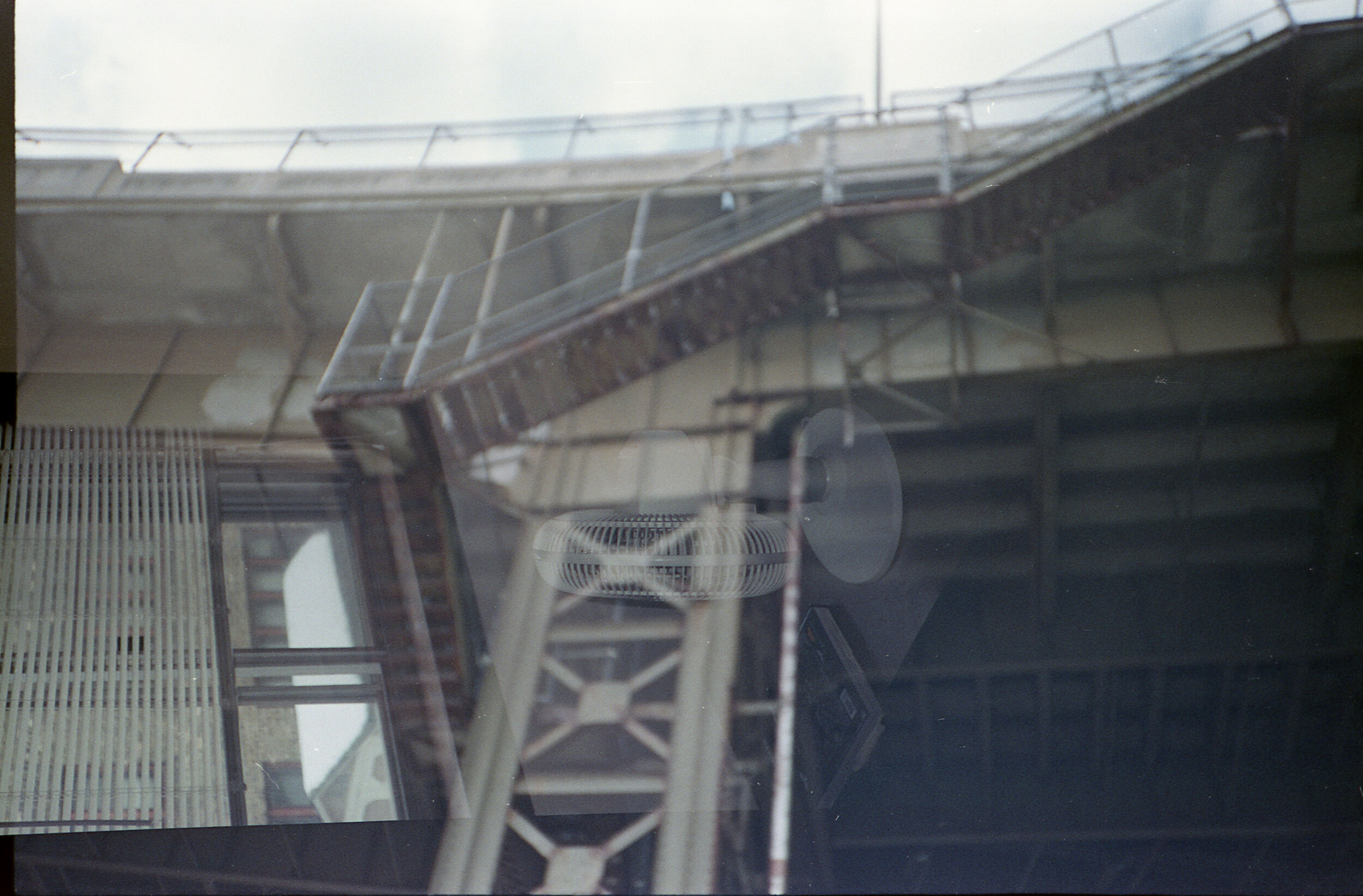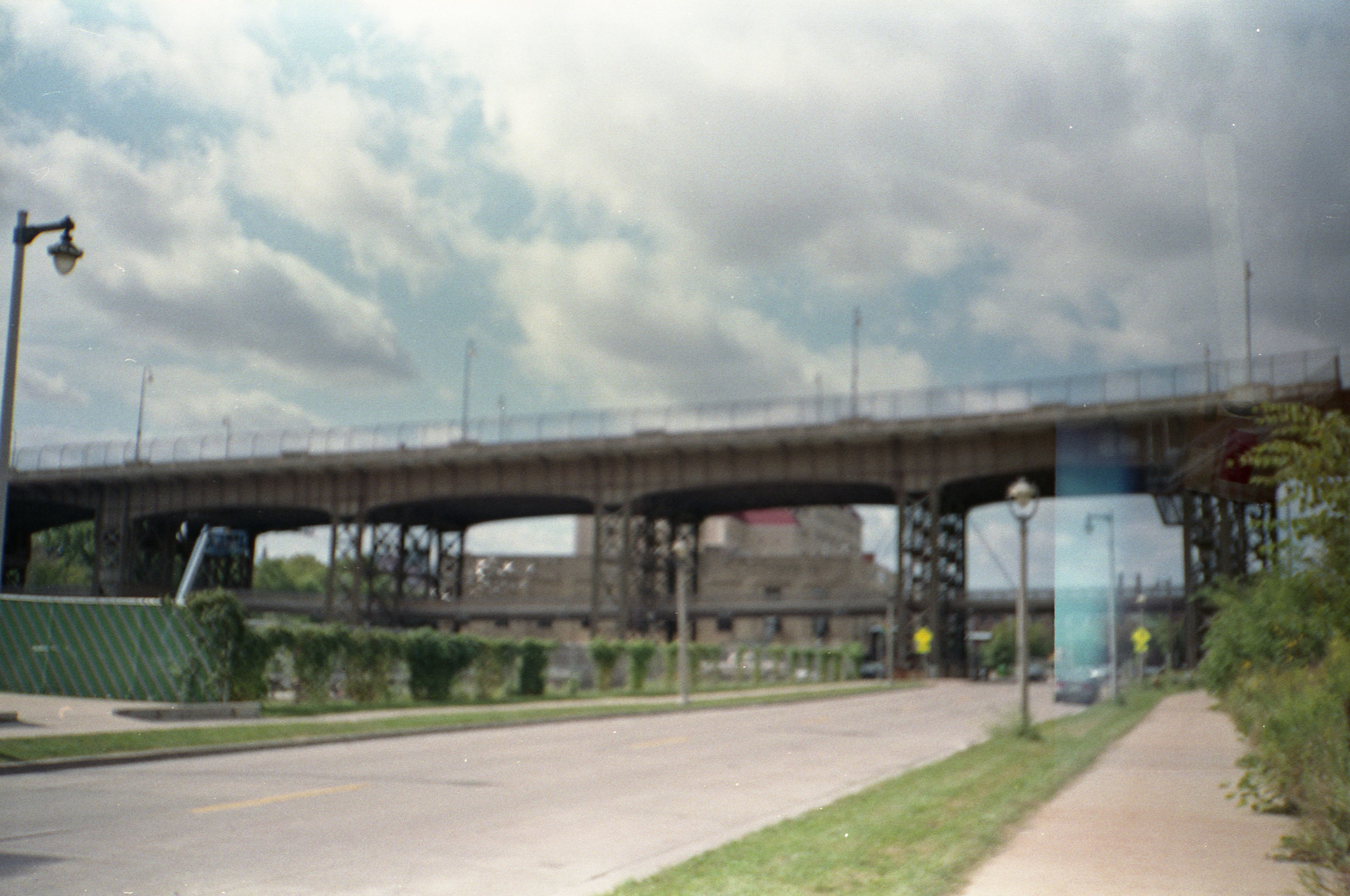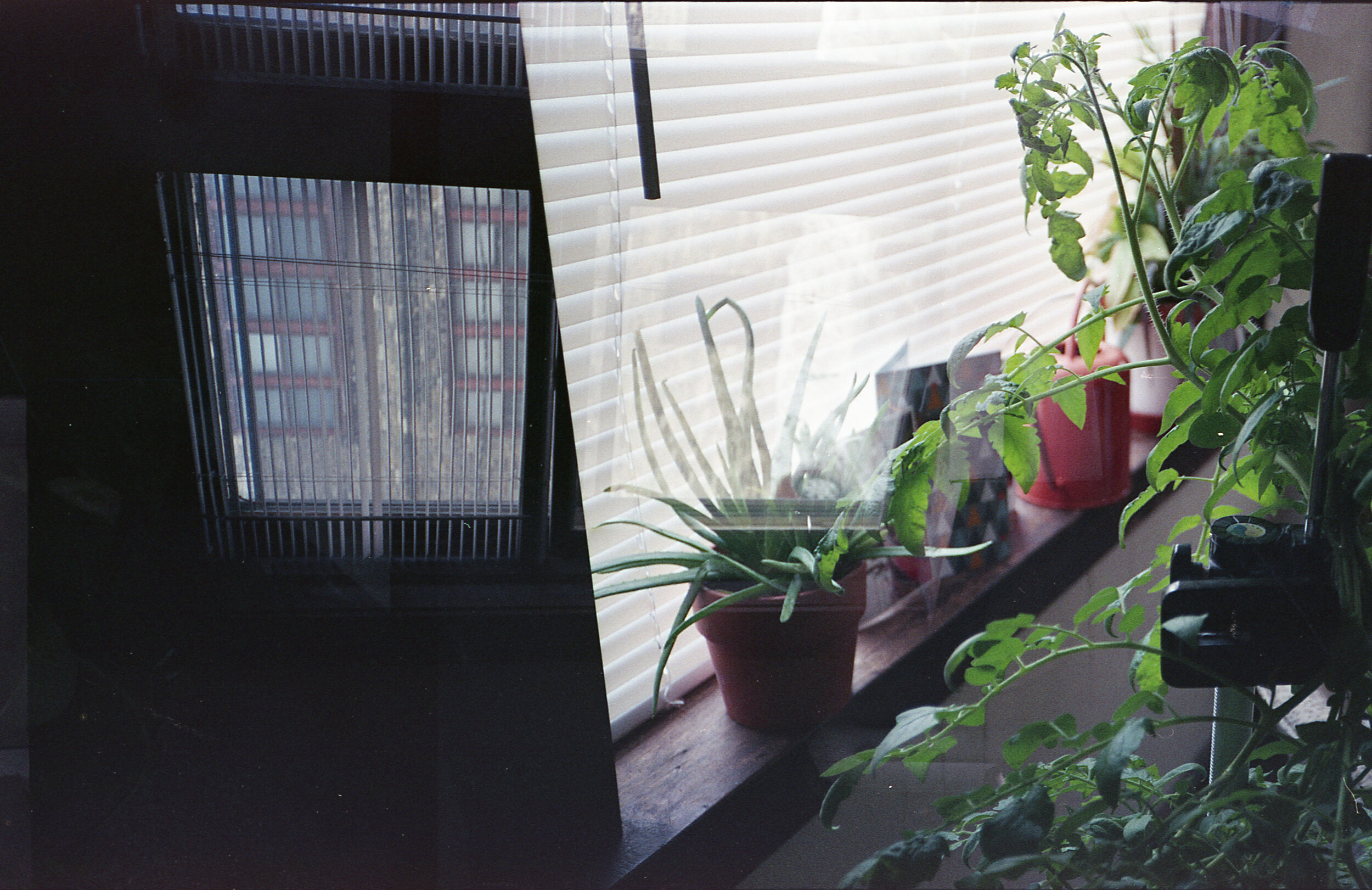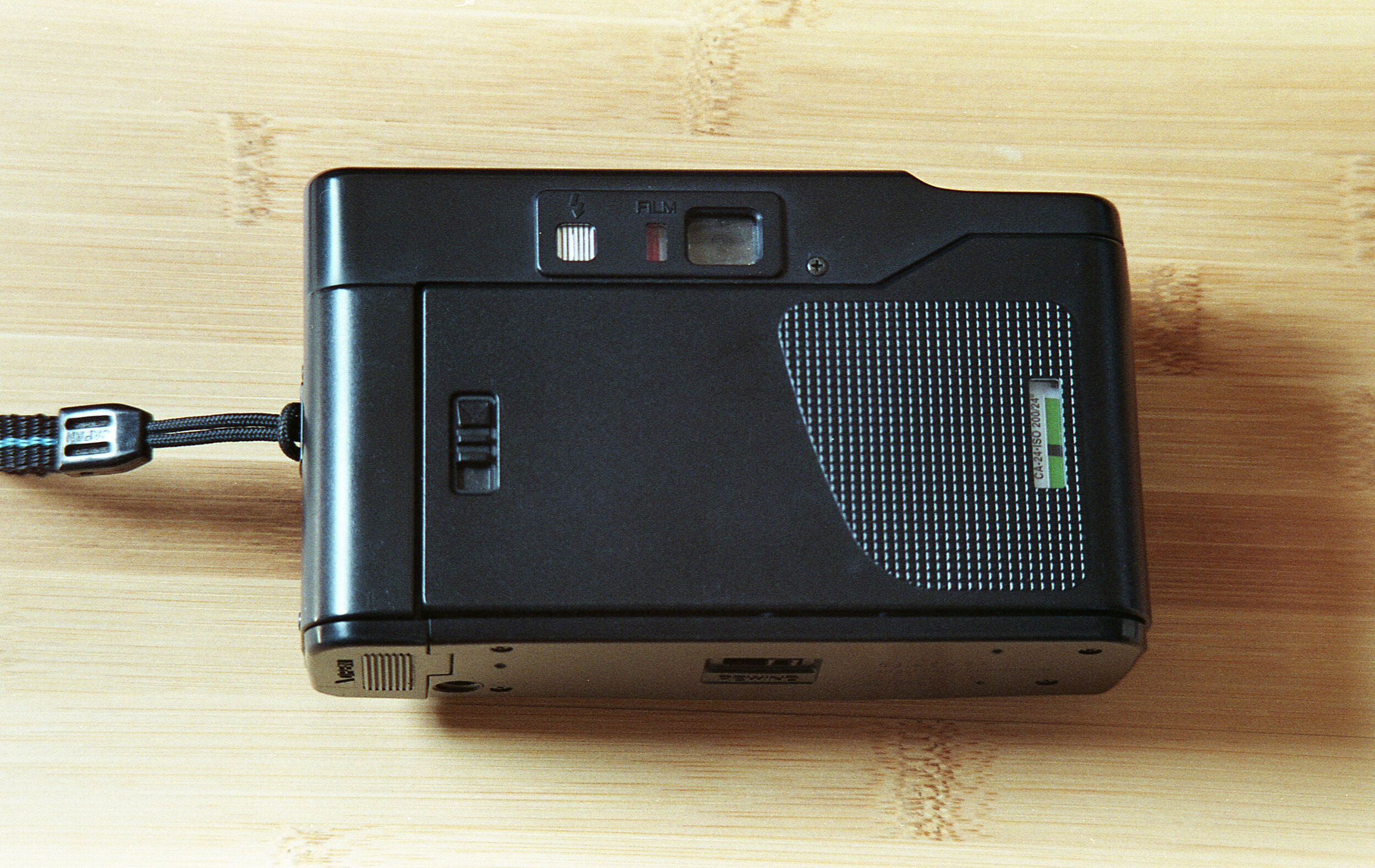September 30th 2019
Yashica Auto Focus Motor II
The not ‘date back’ version of the Yashica Auto Focus Motor II
The original Yashica Auto Focus Motor was released in 1981 according to most sources, but there seems to be an issue with finding an exact date for the second incarnation. Most people say that around 1985 the Yashica Auto Focus Motor II was released. After some research, the only instance of a date I can find is on a brochure advertising the IID variation, with the date 1985 displayed on the data back. Strange to see people not very sure over the date of a camera, but given that it's not very popular or well known as the first incarnation, I can understand.
Within the first test roll, there were few usable pictures. Of those few, I was having an overlapping issue as well as far away shots being slightly out of focus
The take two on auto focus
The logo on the front cover of the AFM-II
The Yashica Auto Focus Motor II (AFM-II) is an upgrade to the previous Auto Focus Motor camera, in the terms that you do not have a separate auto focus button to push before you take the shot. With a sleeker design and a sliding cover over the shutter, the AFM-II keeps in the late 1980s sleeker style, while further automating the camera. In an all black design, the only thing that seems to stick out is the bright red shutter button and self timer light. The camera name is printed on the front in white and blue as well as the Kyocera logo to the right of that. Overall a sleek looking camera with nothing to draw too much attention.
While this camera does not have many manual features, it has reasonable controls for a point and shoot camera. The sliding cover on the front works as the on/off switch for the camera as well as a protective cover for the lens. The camera is operated by two AA batteries, located under a hatch on the bottom of the camera, and they tend to last quite a long time. The viewfinder is bright with parallax correction lines for closer photos. You have an addition of a low light flash indicator as well as an auto focus light. The odd thing about the focus light is it seems to be not for ‘in focus’ but more that the focus is locked. To lock the focus, you line the area you want to be in focus within the indicator, in the center of the viewfinder, and half press the shutter button. This allows you to recompose your photo while the focus stays.
The back of the Yachica AFM-II, you can see the film rewind switch on the bottom here as well
There are a few other controls and indicators on the body of the Auto Focus Motor II. There is a self timer switch that is located under the shutter button with an indicator light on the front left side of the camera. The delay is 10 seconds but can be canceled by moving the lens cover over. The flash has a manual switch that you activate by pulling out the flash from the body. As well as that, when the flash is ready to use, next to the viewfinder there is a flash ready indicator light. Next to that light, there is a red and white striped bar that rotates to indicate the film is advancing correctly. Genuinely a feature that all cameras with an auto wind feature should have. The only other real control you have is a manual ISO setting, located under the lens, with the film speeds of 50, 100, 200, 400 and 1000 available to choose from. It’s a recessed switch under the sliding cover, so there will be no accidental changes as well. Lastly, on the bottom of the camera, you have the rewind switch. You can rewind at any given time, or if you listen close enough, you can time it so the leader is still out. With that, these are all there is for controls on the AFM-II, a point and shoot in all means of the word.
THE SPECS AND FEATURES
Sadly the best image I got for the roll, still out of focus
Shutter Speeds - 1/30th to 1/700th of a second
Aperture - non distinguishable
Meter Type - SPD sensor, EV 8.5 to 17 (at 100 ASA), in low light flash warning
Shutter - electronic
ASA - 50, 100, 200, 400 and 1000
Lens - auto focus: 1.1 meter to infinity, 35mm f/3.5 Yashica lens, 4 elements in 3 groups
Flash Option - built in Flashmatic type, 6 sec recycle time, manual on/off switch
Batteries - 2 AA batteries, lasting 120 rolls of 24 exposure film, 12 rolls when flash used on every picture
Film Type - 35mm
Other Notable Features - sliding lens cover, parallax correction frame, focus lock, optional data back (AFM-IID), auto film advance to first frame, motor drive, motorized film rewind
The Experience
The inside of the Yashica Auto Focus Motor II
I had a lot of mechanical and electronic problems with this camera. Off the bat, there was corrosion in the battery compartment, but nothing a little vinegar could solve. I got the camera to fire one shot before it gave up again. It seems that the return for the auto focus mechanism was not working properly. I’ve fixed enough cameras in my life to be confident that this would be an easy fix. As I was initially was taking the camera apart, right away it took a turn for the worst. I somehow broke a very small plastic piece that held on the ISO switch, then the contacts to activate the flash bent, and more plastic pieces decided to break and cause me more hell. I somehow managed to get the camera back together and tried my best to run a roll through.
As expected, not good. Rarely do I ever have this much trouble with a camera, but this one decided to fight me every time I took a picture. The first roll went like this, flash worked sometimes, overlapping frames, had to hit the camera to get the shutter release to work, the ISO switch kept falling inside the body and the infinity focus was off. That’s quite a few issues, but I was determined to get this camera working. I wasn’t about to let a point and shoot with a manual flash switch and an ISO switch go to waste. This camera was not meant to be taken apart, let alone a dozen times. But the overall build quality seemed to hold up until I made one fatal mistake. I decided to drench the focus mechanism and shutter in lighter fluid to see if I could fix the infinity focus. I have done this to a previous camera with great success, but not this one. The shutter would not even fire anymore and the electronics seemed off after that. Once a point and shoot cameras electronics start to go, there is no turning back. For what it's worth I tried a couple more things to fix the Yashica, but eventually put the camera down and sadly considered it a loss.
The newly added Kyocera logo to Yashica cameras
I liked using the Yashica Auto Focus Motor II, even with all of the trials and tribulations I went through. It has almost all the features I look for in a point and shoot camera; smaller size, a built in lens cover, choose your ISO and a manual switch for the flash. Even after all that trouble, I will keep my eyes open for a replacement. I genuinely did enjoy my time using this camera, and I am eager to throw a roll through one that is fully working. Surprisingly enough, I didn’t even know this camera was worth anything or sought after in any way. It seems to command not too high of prices online for a point and shoot with great options, and I would say if you see one for a reasonable price I would jump on it. The features of this camera truly make it a viable shooter today and should be on anyone’s list as a cult classic.






